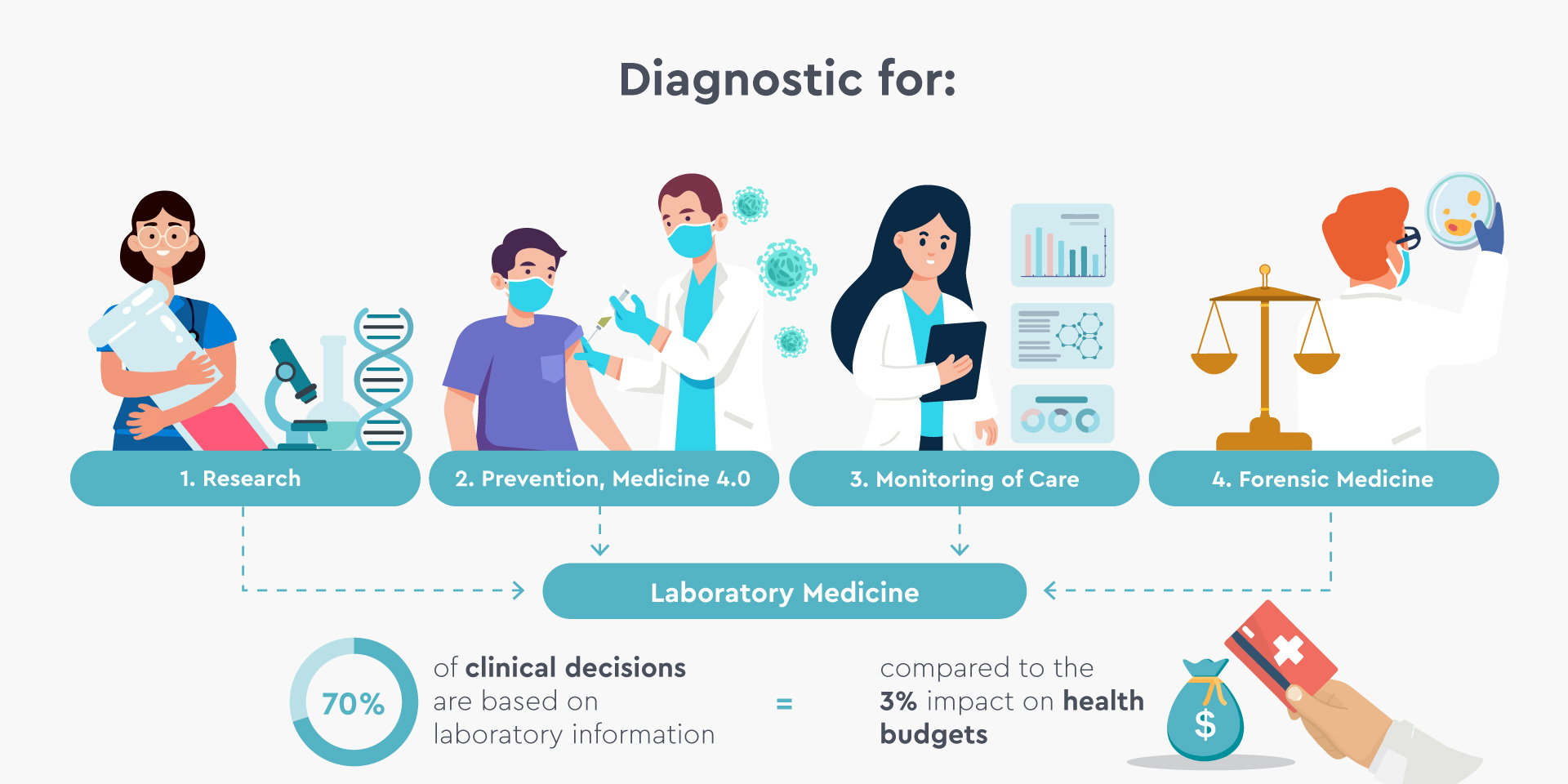In the future, the total convergence of the digital, physical, chemical and biological world is looming, wherein the laboratory becomes a fundamental factor in medical practice and is increasingly integrated into the clinical-diagnostic process. New “medical knowledge” is based not only on the doctor's “evidence-based medicine” approach, but also on greater precision in the diagnosis supported by the data.
Investments are being planned to achieve massive networking of healthcare devices in 2026 and by 2030, the IoT is expected to be replaced by the Internet of Everything, as well 5G technology being replaced by 6G for global coverage in the healthcare market.
In addition to Big Data health, artificial intelligence and robotic technologies, another frontier is miniaturization and lab-on-a-chip, which are devices that incorporate one or more analyses in a single chip.
Thanks to design, laboratory medical professionals, doctors, biologists, and clinical engineers have at their disposal instruments that are increasingly intuitive, safe, and ergonomic. Design combines the central role of IT and digital tools with aesthetic quality, ease of use and modularity, with the choice of resistant materials that are capable of being sanitized. This has a positive impact in helping people, on the productivity of medical staff, on the efficiency of health facilities and on the effectiveness of research.




